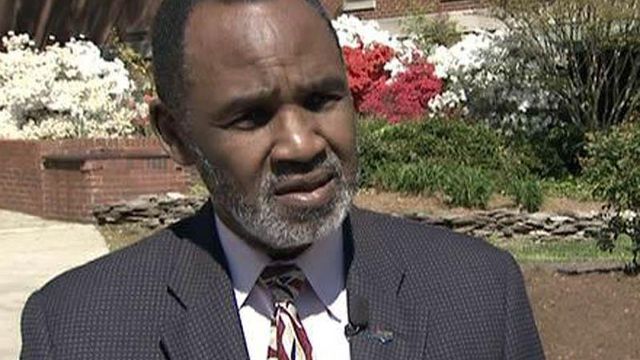State unemployment inches up in March
North Carolina's unemployment continues to set records, but the increase in March was the smallest the state has seen in months.
Posted — UpdatedThe unemployment rate is now double what it was a year ago – 5.4 percent in March 2008 – but the latest monthly increase was the smallest North Carolina has seen since a 0.2 percentage point rise in October.
The nationwide unemployment rate is 8.5 percent. Michigan tops the nation with an unemployment rate of more than 12 percent, followed by Oregon, South Carolina, California and North Carolina.
ESC Chairman Moses Carey said he didn't want to read too much into the numbers.
"If you give people the impression that we have seen the bottom of this downturn, then their expectations might be dampened when the (unemployment rate) goes back up in the month of April," Carey said. "Even if the economy did turn around, the unemployment rate will probably continue to rise before we see any significant declines."
Mike Walden, an economist with North Carolina State University, also said the latest state numbers are deceiving.
Seasonally adjusted employment decreased by 33,300 workers, to 4,060,882, according to the ESC. Walden said that drop was double the 17,171 decline in the number of employed in February.
Meanwhile, unemployment increased by 2,417 workers, to 492,512, the ESC said. The number of unemployed workers remains at an all-time high.
Walden noted that the small increase in the number of unemployed is the only factor that kept a lid on the state's rate in March.
"What has apparently happened is a major increase in 'discouraged workers' – people out of work but who are not actively looking for work. They are not counted as unemployed and are also not counted in the labor force," he said. "The lesson: Keep your eye on the number of people employed, not the unemployment rate."
Nearly 2,000 people under age 25 attended a Friday job fair in Durham, hoping to boost the state's employment figures.
"There are a lot of people here, and so I kind of got intimidated," 16-year-old Erica Broughton said. "I don't know if I'm going to get a job or not because there are a lot of people looking for jobs."
Employers at the job fair had 400 jobs to fill.
"Usually, the room is full with employers. A lot of employers are saying they don't have the manpower to send out, (but) they still are committed to hiring one or two," said Kim Moss, assistant coordinator of Durham's Office on Youth.
Broughton's mother, Sandra Cozart, said it's important for her daughter to find some summer work.
"She needed to come out here and get herself a job for the summer to help pay for her school clothes for the next year and pay for some of her expenses because things are tight right now. She needs to learn early on to help out," Cozart said.
Since this time last year, unemployment statewide has increased by 248,456 people, and employment is down by 215,546 workers, the ESC said.
"Unemployment is a lagging indicator of a slowdown. That means, even after the slowdown is no longer occurring, unemployment will still tick up a little bit," said Paul Stock, executive vice president of the North Carolina Bankers Association.
Still, Stock said he sees glimmers of hope in a bleak economic picture.
"We've just seen some great (foreclosure) figures that just came out. From the first quarter of last year to this year, there's a 42 percent decline in North Carolina, just as foreclosures have gone up elsewhere," he said.
Also, federal programs to lower interest rates and encourage lending might help stabilize the housing market, he said.
"Historically at least, when home building turns around, it's a huge positive sign for the American economy. It has the biggest ripple effect of anything," he said.
Construction took the biggest hit in the latest unemployment figures, losing 4.1 percent of its work force statewide, followed by professional and business services at 2.1 percent and manufacturing at 2 percent.
• Credits
Copyright 2024 by Capitol Broadcasting Company. All rights reserved. This material may not be published, broadcast, rewritten or redistributed.






